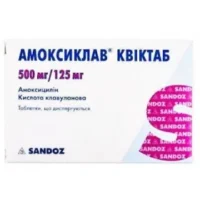Description
Levoflox Coated Tablets 500 mg. №5
Ingredients:
Each coated tablet contains 500 mg of Levofloxacin.
Dosage:
The usual dose is one tablet once a day, or as prescribed by a healthcare professional.
Indications:
- Levoflox is indicated for the treatment of bacterial infections such as sinusitis, pneumonia, skin infections, and urinary tract infections.
Contraindications:
Do not use Levoflox if you have a history of tendon problems related to fluoroquinolone antibiotics.
Directions:
Swallow the tablet whole with a full glass of water. Do not crush or chew the tablet.
Scientific Evidence:
Levofloxacin, the active ingredient in Levoflox tablets, has been extensively studied for its efficacy in treating various bacterial infections. Research published in the Journal of Antimicrobial Chemotherapy demonstrated the high potency of Levofloxacin against a wide range of pathogens, making it a valuable option in the treatment of respiratory and urinary tract infections.
Additional Information:
- It is important to complete the full course of Levofloxacin as prescribed by your healthcare provider, even if you start to feel better before the treatment is finished. Stopping the medication prematurely can lead to the recurrence of the infection or the development of antibiotic resistance.
- Before taking Levoflox, inform your doctor about any medical conditions you have and any other medications you are taking to avoid potential drug interactions.
- Common side effects may include nausea, diarrhea, and headache. If you experience severe or persistent side effects, seek medical attention immediately.





